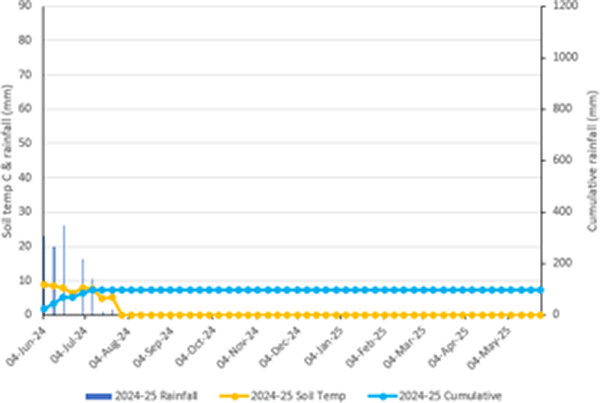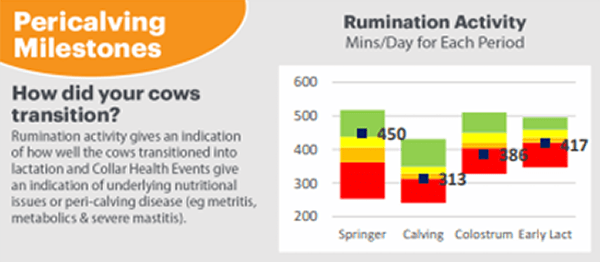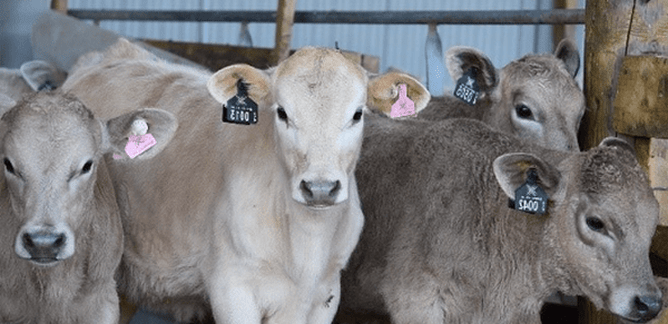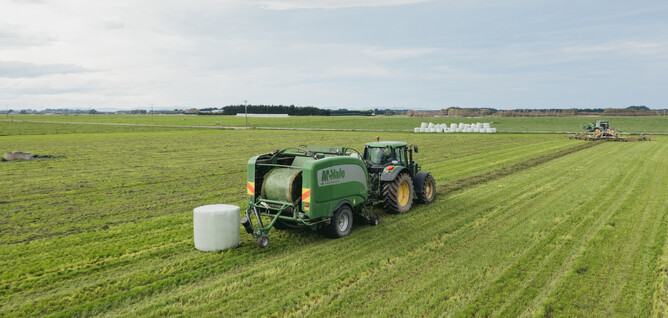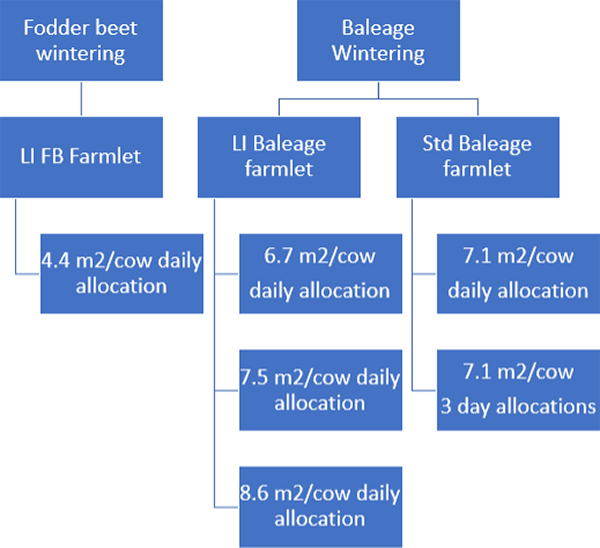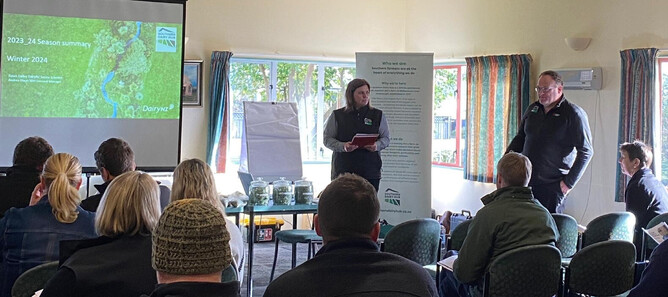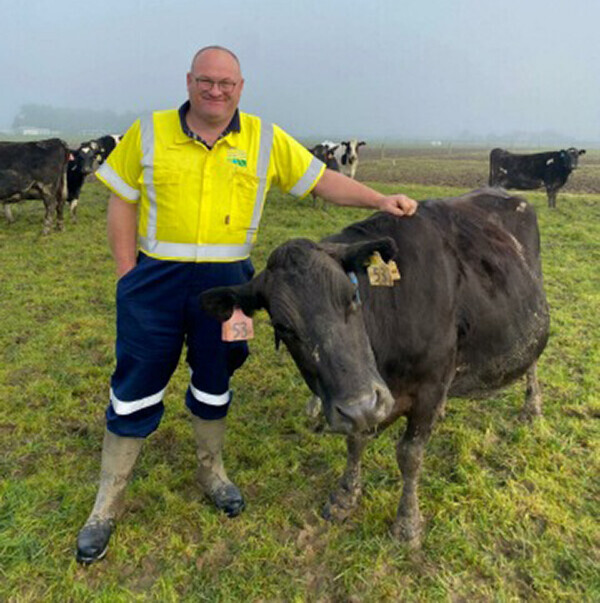Straight from the Hub: GM Andrea Dixon’s insights
Kia ora and welcome to our early-spring newsletter!
We've had a busy and productive few months, and I'm excited to share some of our key highlights and upcoming initiatives with you.
The farm team has had a busy winter delivering the DairyNZ Farm System wintering trials. An early glimpse of our progress is available in the notes from our recent field day (www.southerndairyhub.co.nz/field-days).
Last week, we removed the ICE Cubes (accelerometers that measure cow behaviour, including steps and lying time) from the cows and the DairyNZ team are now analysing the cow behaviour data, particularly lying times, to overlay with the daily collected information.
A lot of effort has gone into getting ready for spring. We've upgraded our calf shed by lifting the floor and adding an external wall, making it a much warmer environment for this year’s calves. This upgrade should also reduce the time our farm team needs to spend in the sheds.
First replacement calf
As we prepare our spring rotation plan, we are currently about 150 kgDM below our desired average pasture cover for this time of year. Cooler soil temperatures and significantly more rain in June, on top of the excess rain in May, have contributed to this (see graphs below). Many farms across Southland are likely to bea in the same situation. Our focus is on minimising pasture damage while achieving good feed utilisation, and ensuring the cows get the intake they need as they transition from the springer mob to the colostrum mob, and then into the main milking mob.
This year, we're putting a real emphasis on utilising our rumination collar information to ensure smooth transitions for the cows as they calve.
Insights from our field day last October highlighted this as a key area of opportunity – see page 12 in October’s field day presentation. Data from the pre-calving milestone graph shows that rumination is excellent in the springer mob but drops post-calving before picking up again in early lactation. To address this, we will implement fresh pasture allocations after every milking.
Ally, one of our new farm team members, is particularly enthusiastic about the collar technology and is actively using health alerts to make proactive decisions — great energy, Ally.
Our cows are in great condition as we head into calving, with the heifers (R2) averaging a BCS of 5.8 and second calvers averaging BCS 5.5 with only 11% currently not at their pre-calve target of 5.5.. Now we just need the paddocks to dry out a bit and warm up.
Dairy Beef Breeding
Last year we made the decision to breed our bottom 15% on BW to a beef sire as we lift the genetic gain across the herds. Working with Nathan Benfell, our Senior Agri Manager from LIC, we chose two Charolais and two Murray Grey bulls based on growth rate and intermuscular fat. Three of these bulls were part of the Beef + Lamb New Zealand Dairy Beef Progeny trial, giving us confidence in our selection criteria and suitability for breeding to a dairy cow. We used the Charolais bulls across the Friesian animals, and the Murray Grey bulls with the smaller crossbred and Jersey animals. Our Murray Grey bulls come from Torrisdale Stud in Southland, and the Charolais bulls from Kakahu Beef Stud in Geraldine.
We have since partnered with Ben Watson from GENEZ, an organisation focused on unlocking additional value for both the dairy and beef sectors while addressing industry challenges. Together, we are developing a traceability programme for our dairy beef calves within the Southland region. This programme aims to map the calves along the supply chain, providing clear visibility of profitability by being specific about beef sire selection (bull-specific rather than breed-specific). These calves need to grow well and have excellent intermuscular fat figures, which help create a premium at the end of the supply chain and ensure maximum profitability for the grazier.
GENEZ is establishing unique partnerships with both stock agents and processors, recognising the brand and paying a premium.
From the start of calving, we expect nearly 100 dairy beef calves to be collected by a local grazier regularly as part of the programme.
We’re excited about this programme and are in the early stages of planning an on-farm field day in early September, alongside GENEZ, Beef + Lamb New Zealand, and Fonterra, to share insights and opportunities of the programme, and how it’s working here at the Hub.
Watch this space for further details.
Wintering summary 2024
Wintering cows on crop in the southern South Island has come under increasing scrutiny over the past five years from a regulatory and public perception perspective. The implementation of wintering rules restricting the area that can be planted in winter crop, along with slope and buffer zone restrictions has resulted in farmers looking at alternative wintering options. These changes have seen the emergence of baleage wintering. While baleage wintering has been quickly adopted (from approximately 9% of farms in 2021 to 19% in 2023) there is little information on the optimum stocking density, pre-graze pasture mass, pasture species and feed allocation frequency to minimise soil damage and impact on future pasture growth. There is a wide range in how baleage wintering has been adopted with bale densities ranging from 60 to 120 bales per hectare. At 120 bales per hectare the cow density is similar to forage crop wintering.
To ensure farmers can meet future environmental and animal welfare expectations, a better understanding of the impact of bale density, feeding frequency and/or pre graze mass on soil physical conditions, animal behaviour and subsequent pasture regrowth is required.
At the Southern Dairy Hub in winter 2024, we conducted a study to investigate whether wintering on paddock on baleage, compared to fodder beet, improves wintering conditions for dairy cows. We examined the effect of daily area allocation (6.7, 7.6 or 8.6 m2/cow/day) or frequency of baleage allocation (daily or 3 daily) on soil conditions, cow behaviour and subsequent pasture regrowth.
The study involved 6 herds (Figure 1) of approximately 74 cows each balanced for age, calving date, pre-winter BCS, and genetic merit and all contained R2s. Within each group, 30 mixed age cows were selected for behaviour monitoring using ICE Cubes (accelerometers attached to the lower leg).
The study was conducted from 12 June to 11 July 2024 and includes the following measurements:
Fortnightly crop yield
Weekly pre-grazing pasture mass (baleage paddocks only)
Weekly crop, pasture and baleage sampling for nutritive value
Daily behaviour – lying, standing, walking, rumination
Daily soil conditions – pugging depth, surface pooling, gumboot score, % bare ground
Daily rainfall and soil temperature
Winter Field Day Update
A huge thank you to everyone who attended our 'Farming for the Future' field day on 10 July. It was wonderful to see so many farmers, partners, and key stakeholders come together. We enjoyed insightful presentations from DairyNZ, Fonterra, Environment Southland and Recycle South.
The knowledge and tools shared were invaluable. If you missed the event or want to revisit the highlights, check out the key resources and presentations on our website, including a year-end summary, a comprehensive wintering guide, and an update on the current wintering trial: www.southerndairyhub.co.nz/field-days
Welcome to Ian Butler, SDH’s new Farm Manager
Dairying runs deep in Ian Butler's veins. His grandparents operated a Jersey stud, and his mother's family, the Hitchcocks, were born in Southland, milking over 100 cows in the 1920s. “I come from a long line of innovative farmers,” Ian proudly shares.
His agricultural journey began in the orchards of Otago, followed by sheep farming in Southland. Ian then moved to Taranaki with his wife, where he embarked on his dairying career, managing an 800-cow farm. Following this, he share milked for 10 years in Taranaki and the Waikato. During this time, Ian and his wife developed a passion for showcasing their journey, learnings, and successes through the Farm Manager and then Sharemilker of the Year contest, achieving notable success over the years.
Following a period of share milking in Cambridge, Ian joined DairyNZ in a role he thoroughly enjoyed. “For me, it was about helping farmers every day,” he says.
Eventually, the opportunity arose for Ian to return to Southland. While still working for DairyNZ, he connected with SDH, supporting research and extension. Ian has a passion for the dairy sector and how “it always pushes boundaries,” particularly its continuous innovation and growth through demonstration, ITO, science, and research. When the SDH farm manager role became available, Ian saw it as the perfect fit for his passion and expertise.
We're very excited to have Ian on board and are confident he will make a significant impact at the Southern Dairy Hub.
Winter Field Day Update
Dairy beef Field Day at the Hub: 12 September
Pop this date in your diary! More details coming soon on our Facebook page and website.
Thanks for reading. Stay tuned for more updates or visit www.southerndairyhub.co.nz to find out more.
Kind regards,
Andrea Dixon (General Manager)


